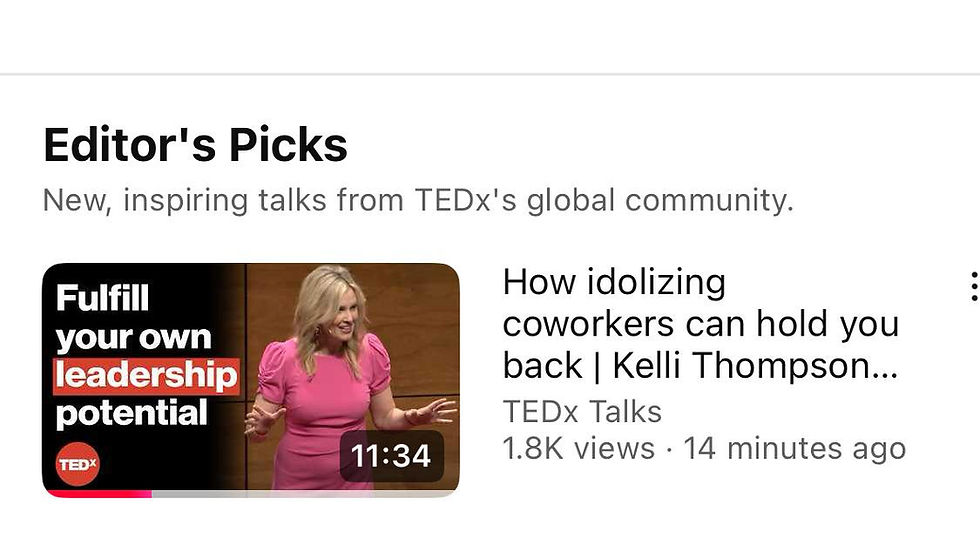Expert strategies for transitioning into a new leadership role
- Kelli Thompson

- Apr 14
- 2 min read
Updated: Aug 25
The first leadership training event I ever conducted felt pretty rough. The topic was leadership decision making. Afterward, I admitted to my manager, “Who am I to tell them what to do and how to make decisions? I've been a manager for about five minutes and most of these leaders have been managers for 15 years.”
The question she posed to me next transformed my relationship with expertise for a lifetime. She asked, “What if your job is not to be the expert up there, but to facilitate the expertise in the room?”
It was like the sky parted and the sun emerged. Of course that was the answer.
Because I had been promoted throughout my career due to my level of expertise, it was natural for me to assume that in my new role, expertise was the only way I could add value.
In my latest Fast Company article, I unpack this shift along with four other traps that keep newly promoted managers stuck as doers when they should be emerging as influential leaders:
1. The Habit Trap - continuing to say yes to performing your old tasks out of habit.
2. The Comfort Trap - allowing your leaders to continue to use you in ways they did before your promotion.
3. The Free Time Trap - the temptation to jump back into “doing mode” with your free time due to the thought, “If I'm not doing the visible work, then how am I adding value?”
4. The Guilt Trap - the pressure to continue to do certain tasks or projects for others because you - or your predecessor - used to do it for them in the past.
As you navigate your own leadership transformation, ask yourself, “Do I want to be the person who always had the answers or the leader who empowered others to find their own?”
I'm excited to share this full article with you. Check it out and share it on social media or directly with a friend or colleague who would love some inspo on their journey from shifting from high achiever to influential leader!

Kelli Thompson is an award-winning author, keynote speaker, and executive coach who specializes in helping high achievers advance to influential leaders in their organizations. She is the author of the critically acclaimed book, Closing The Confidence Gap: Boost Your Peace, Your Potential & Your Paycheck.
Learn more about: Executive Coaching | Speaking & Training | Group Programs






Comments